Our OM-D E-M1 hands-on coverage:
Low-light performance – Olympus Europe interview – M.Zuiko 40-150mm f/2.8 Pro lens – Autofocus
The Olympus OM-D E-M5 was the first camera we reviewed here at MirrorLessons back in January 2013. It is also the camera which inspired us to start this blog and led me to switch to mirrorless for both my personal and professional work. So when Olympus invited us to try out the new OM-D E-M1, to say that we were over the moon would be an understatement. We tried lots of different features during the afternoon and evening but in this article, I want to share my first impressions regarding low-light performance, one of the aspects I was very curious to try.
High ISO Performance
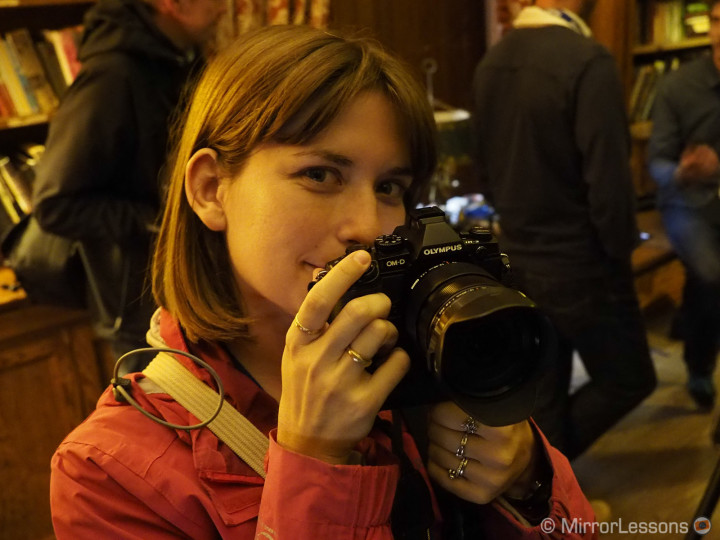
The OM-D E-M1 has a new sensor that lacks an AA (Anti Aliasing) filter. This means more sharpness but theoretically more moiré issues and noise at high ISO levels as well. The ISO range is the same as the E-M5 (200 to 25600 ISO) but the E-M1 also has an extended low 100 ISO like the Pen E-P5.
It was rumoured that the E-M1 would have a one-stop improvement for ISO, meaning that 800 ISO on the E-M1 would look like 400 ISO on the E-M5. I wanted to see the difference myself, so Heather and I took a series of indoor pictures inside one of the many ornate sitting rooms in Castle Leslie. The setting was very dark, illuminated only by weak lamps in various corners of the room. Of course we made sure that both cameras had exactly the same settings:
- 3200°k
- noise reduction set to standard for JPGs
- manual mode with same aperture and shutter speed
- natural profile, all colours settings to 0, Adobe 1998 color profile
- the same lens, the new M.Zuiko 12-40mm f/2.8
The JPGs produced from the RAW files were exported using the Olympus Viewer 3 software, as there isn’t a RAW update for Lightroom and Photoshop yet. (Update: there is now support for Lightroom and Photoshop!)
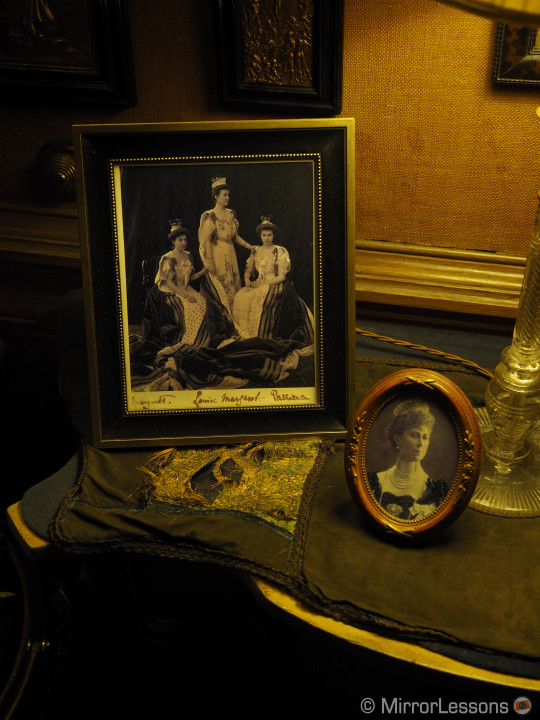
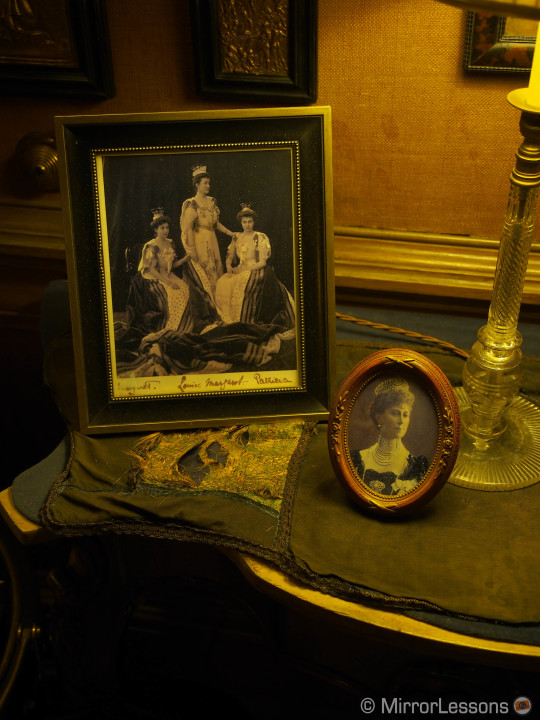
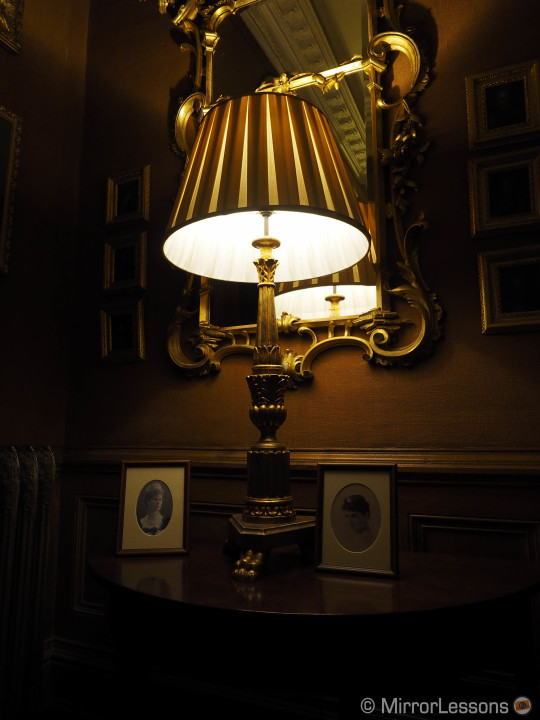
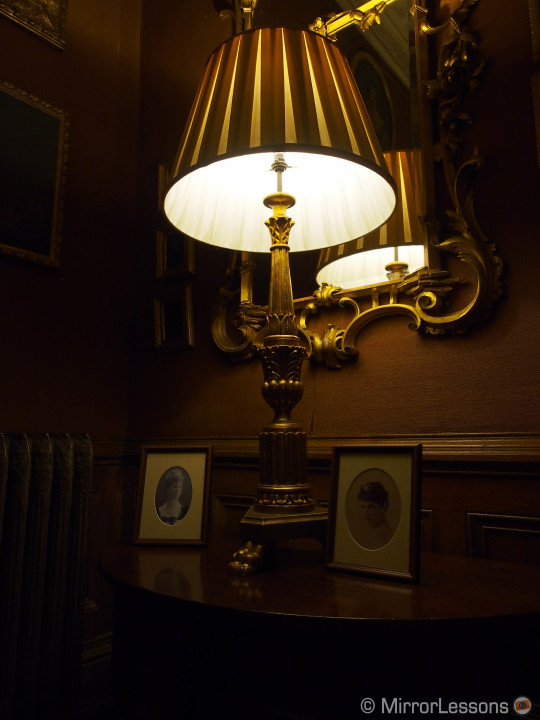
N.B.: my apologies for the second set of pictures as the aperture for the E-M5 was supposed to be f/4 and not f/4.5.
I found the pictures at 800 and 1600 ISO on the E-M1 and E-M5 equal regarding the amount of noise. The difference is that the E-M1 is sharper, though it has the same minimal noise as the E-M5.
This is also visible on the Original On Camera JPGs.
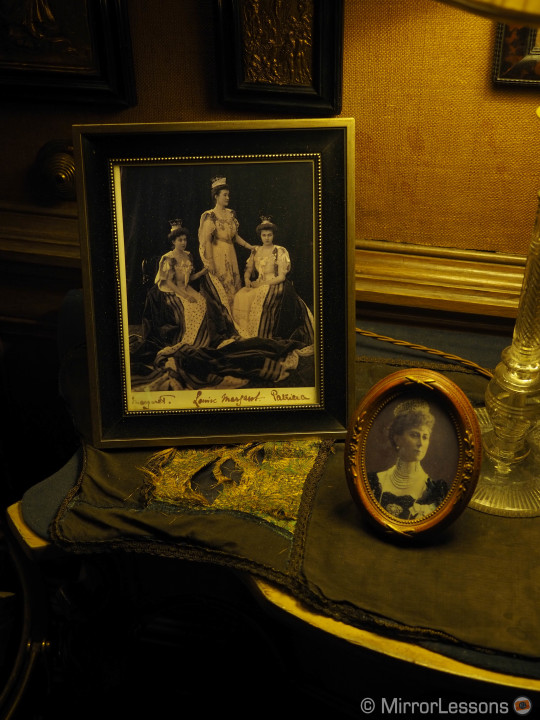
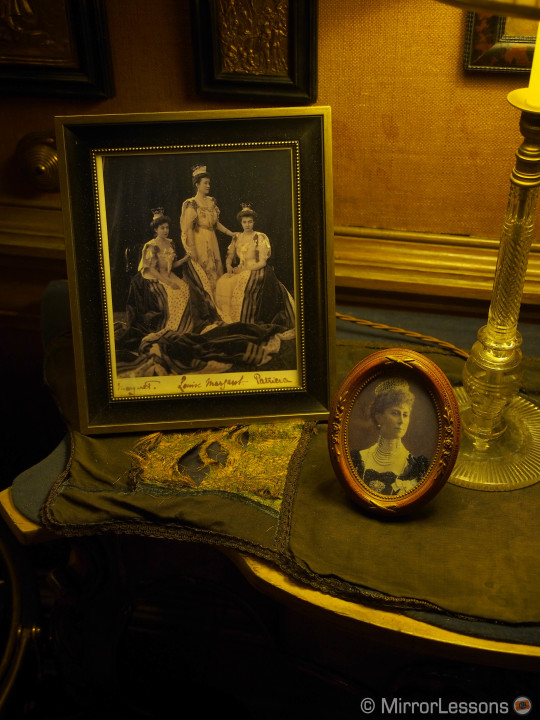
At 3200 and 5000 ISO, you start to notice slightly more noise in the E-M5 pictures, but you still need to view them at 100% to see the difference. Again the E-M1 pictures are sharper.
All the pictures below are from RAW.
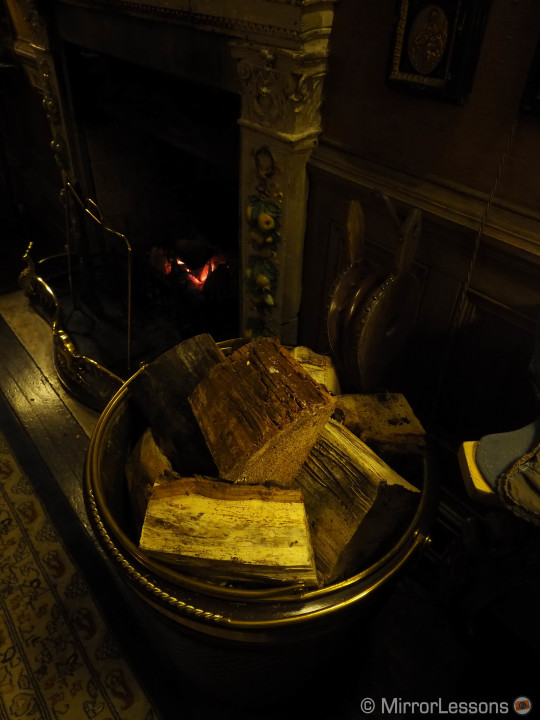
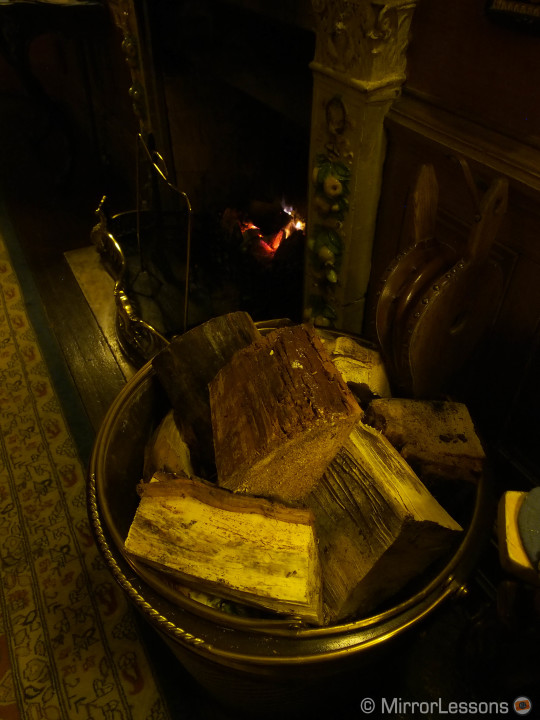
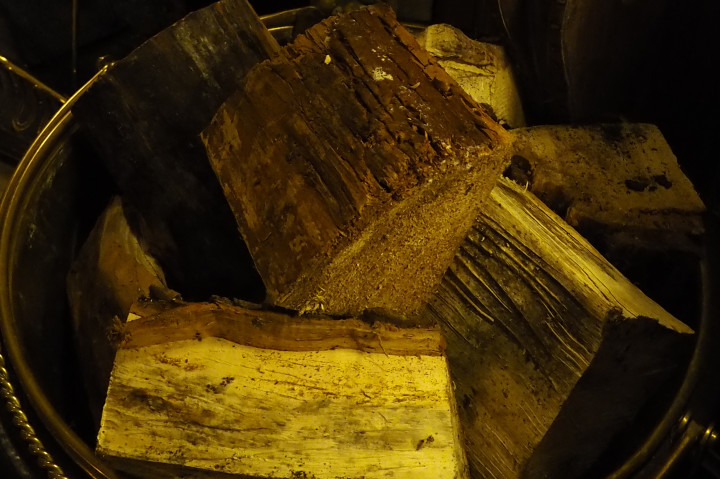
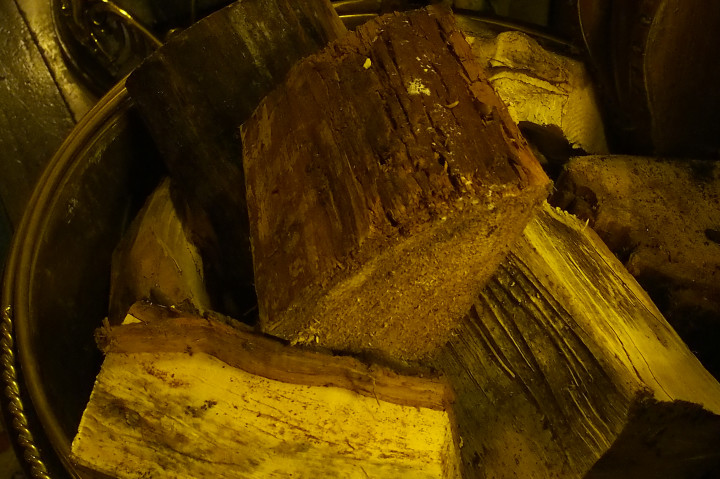
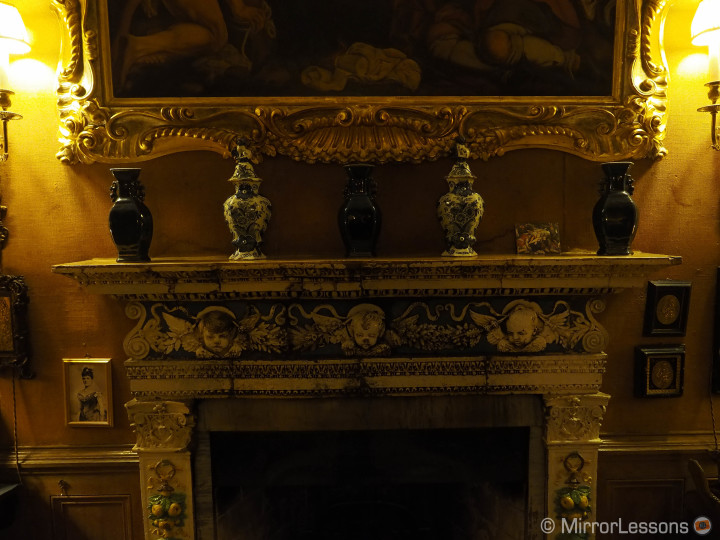
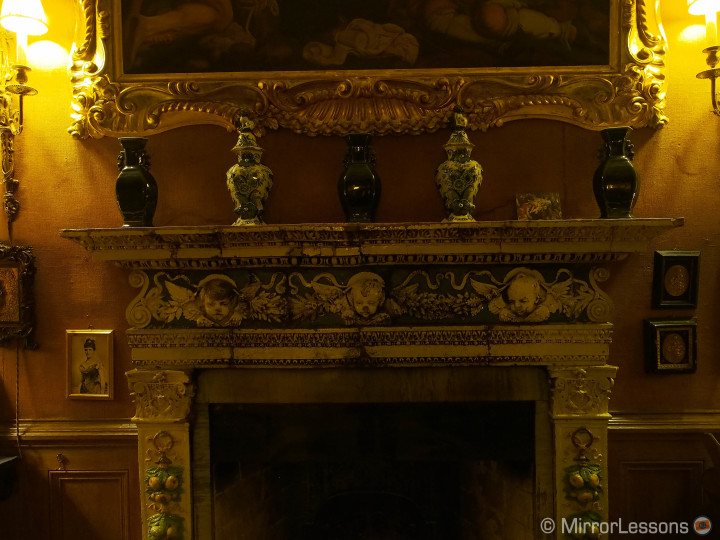
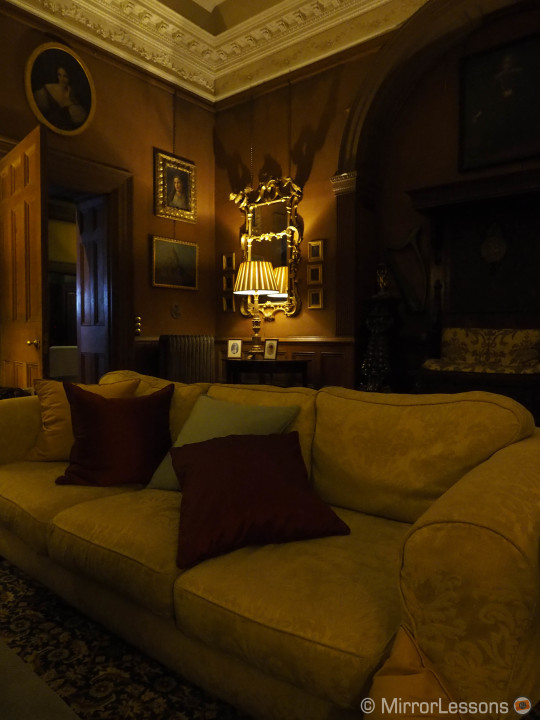
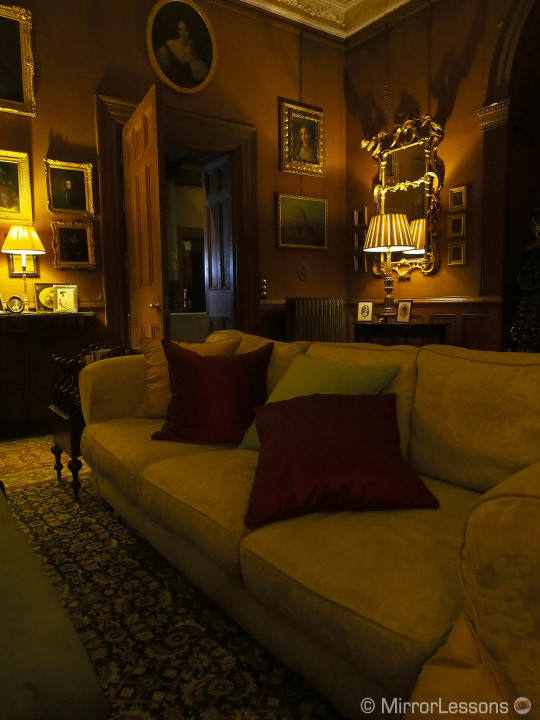
What impressed me the most were the extreme ISO settings: 12800 and 25600 ISO.
You can clearly see not only the improved sharpness and colour accuracy of the E-M1 but also less noise and fewer colour artefacts compared to the images taken with the E-M5.
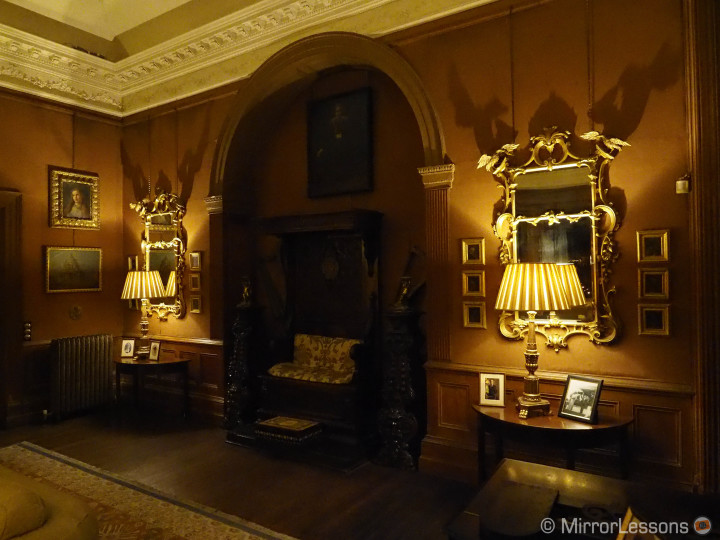
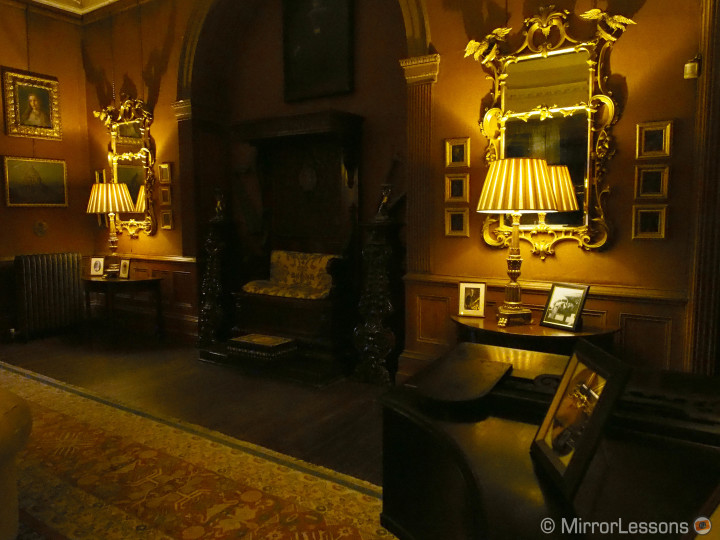
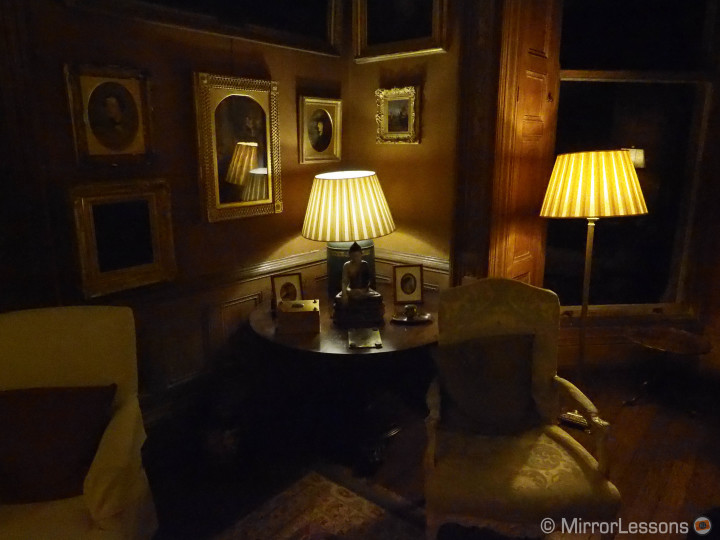
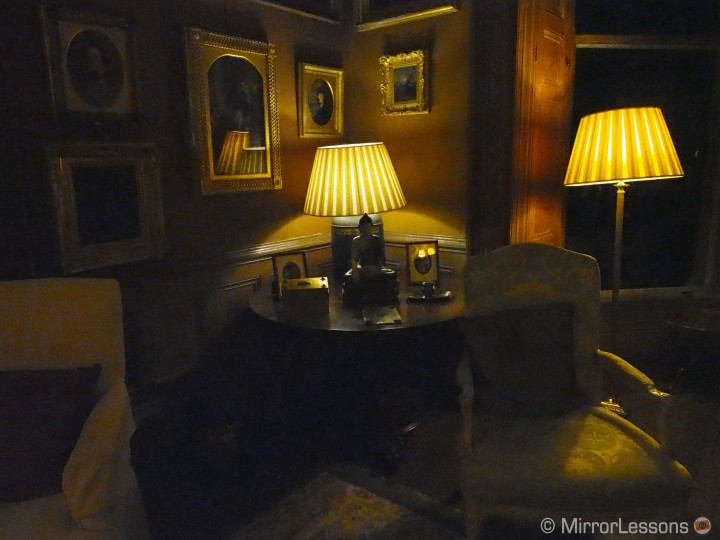
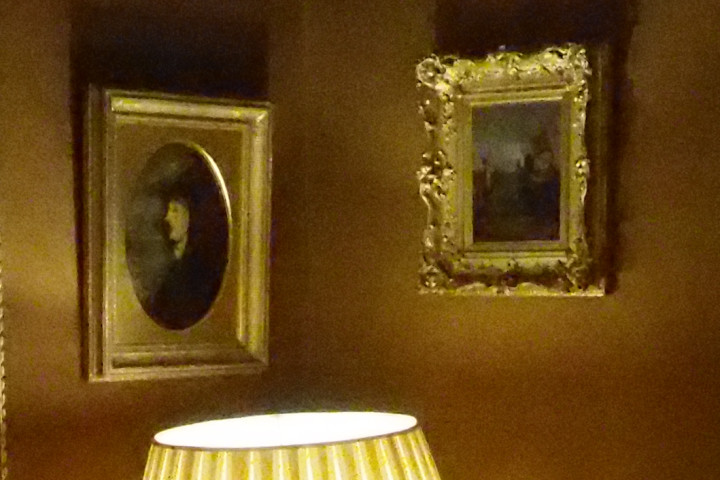

As we can see, we have to concentrate on sharpness to really see the difference between the two cameras. The difference concerning noise is more subtle until you get to 12800 ISO. From this point on, the E-M1 performs much better. For me, the 25600 ISO shots are way more usable on the E-M1 than on the E-M5. And since the lack of the AA filter allows for a lot more sharpness, we have two very good reasons to say “bravo” to Olympus!
Below are more high ISO pictures taken with the E-M1 (from the original on-camera JPGs).
5-Axis Stabilisation
The second thing I wanted to try was the 5-axis stabilisation which Olympus said it had improved on the E-M1. The samples taken by Robin Wong in the first part of his full review of the E-M1 were very impressive, so I did a similar test myself and also made a comparison with the E-M5.
Again I made sure that the two cameras had the same main settings and chose a shutter speed of 2 seconds to test both cameras in an extreme situation. With the 12-40mm mounted on both models, I took two shots, one at 12mm and the other at 40mm. When you use a short focal length, the micro movements you generate by holding the camera will be less noticeable, while with a longer focal length, they will be amplified.
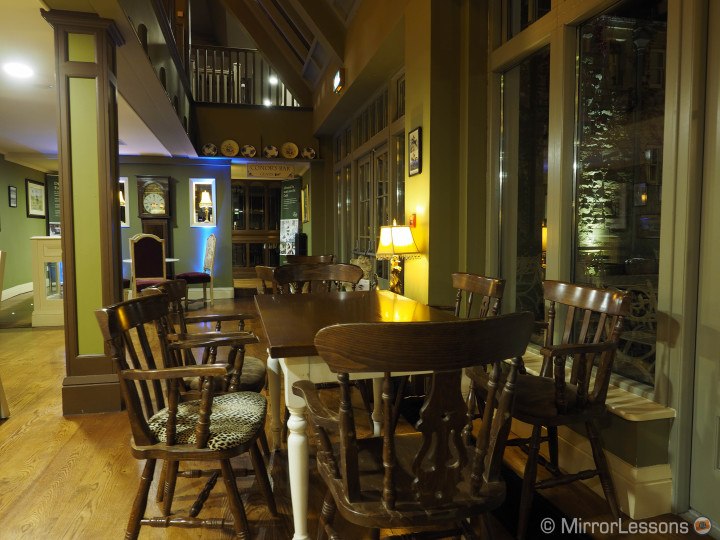
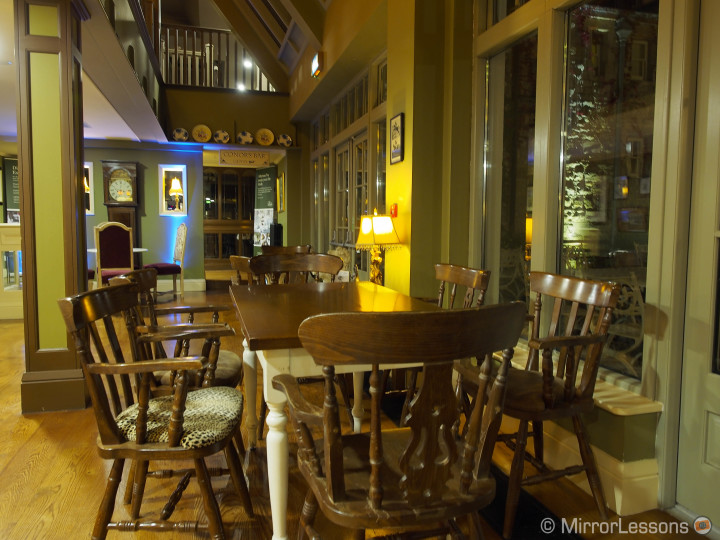
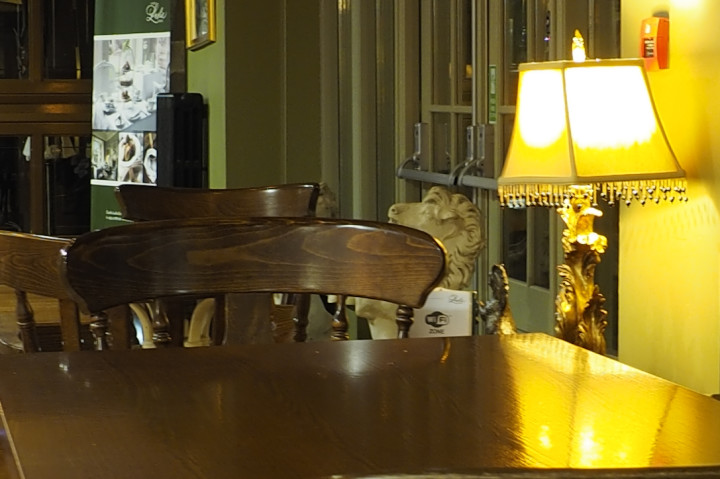
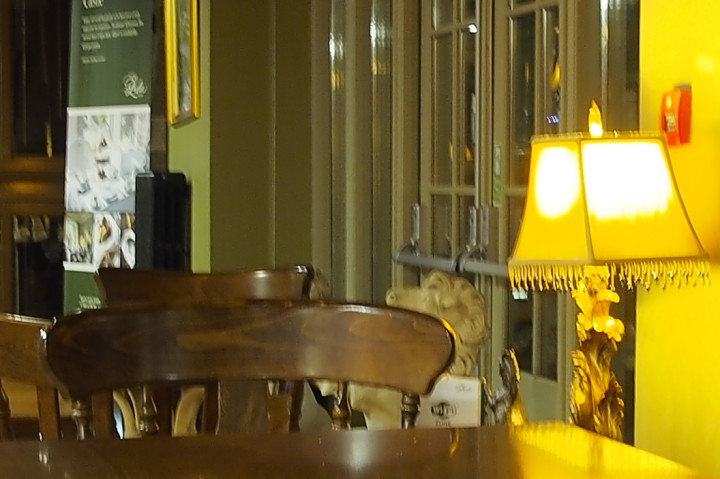
You can see in the two examples that at 12mm, the E-M1 is completely sharp. The E-M5 is less sharp – if you zoom in on the images, you can notice some blur due to micro movements.

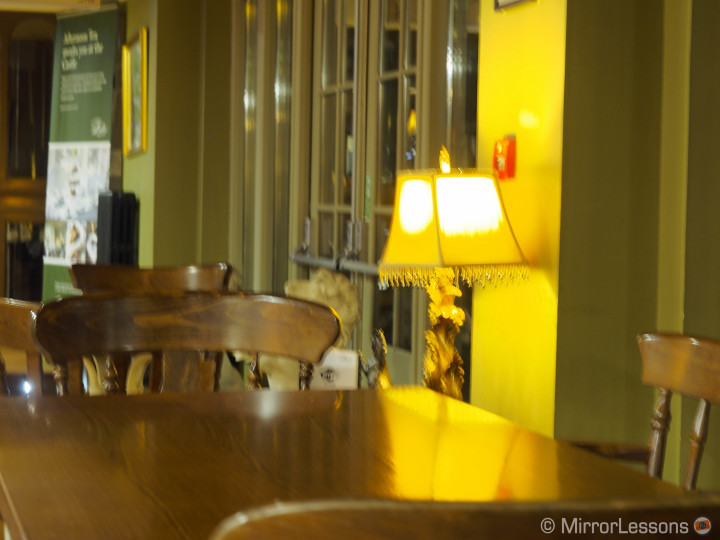
The difference becomes even more evident at 40mm. Both of them are blurry, but the 5-axis on the E-M1 is more effective.
So yes, the stabilisation on the E-M1 has been improved. I took other pictures with it between 1 and 2 seconds to see how far I could go. The results are variable. The effectiveness of the 5-axis stabilisation also depends on how still you are and how far your subject is from you. I took two or three shots of the same scene with the same settings and they weren’t equal in terms of either blur or shake. You need to find a comfortable position where you can remain as steady as possible. Generally, the results will be better if you can sit, rest your arm on a chair or stand against a wall.
Conclusion: The real-world benefits
How can these two great improvements (ISO and stabilisation) translate in a real-world situation? Well, it means that I can raise the ISO on the E-M1 more than I can on the E-M5. While with the latter I always tend to stay at a maximum of 3200 ISO, I won’t hesitate to use 6400 ISO with the E-M1. This, combined with the great increase in sharpness, makes this camera a formidable competitor.

Taken at the Massimo Theatre during a live music screening. This means there was no light at all except what is shown on the screen.
I took the picture above during a live performance in a theatre with the E-M5. Due to the lack of light, I had to take some shots at 25600 ISO. They are usable considering the extreme situation, but with the E-M1 I would have less noise and more sharpness.
Apply this logic to a lower ISO like 3200 and 6400 ISO and I think you can see the benefits.
Concerning the 5-axis stabilisation, the same logic applies. I showed you examples at shutter speeds of one and two seconds hand-held, which is extreme – I will rarely find myself in a situation where I need that. But the fact I can go down as far as two seconds also means that I can trust the E-M1’s 5 axis more, and be certain that with the right position and steadiness, I will almost always achieve sharp pictures at slow shutter speeds down to 1 second. For someone like me who tends to use tripods as little as possible, it is undoubtedly one of the features I value the most about this camera.
Since I started using the E-M5, I have noticed that I use my tripod less with the exception of special situations. Knowing that the E-M1 is even better than its already incredible predecessor allows me to feel even more comfortable with leaving my tripod at home.
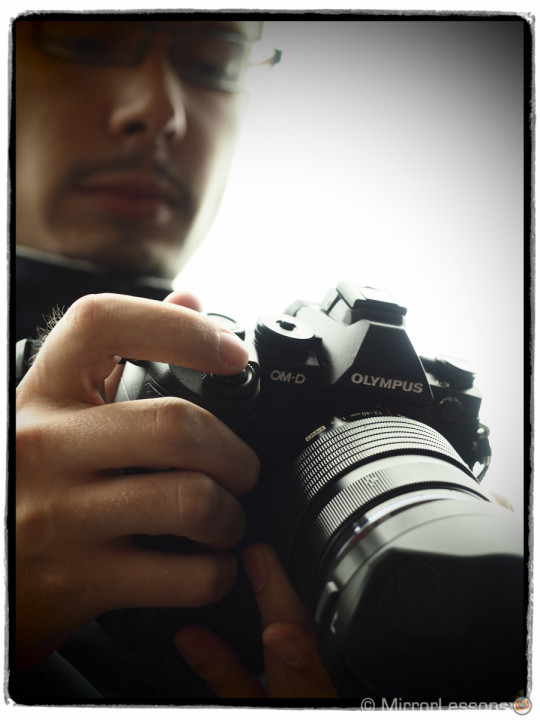
I hope you enjoyed this first article about the OM-D E-M1. An overall first impression article is coming, as well as an exclusive interview with Olympus managers and a couple of hands-on videos. So stay tuned and of course, let us know your impressions in the comments section below – we are looking forward to reading your opinions as well!
Our OM-D E-M1 hands-on coverage:
Low-light performance – Olympus Europe interview – M.Zuiko 40-150mm f/2.8 Pro lens

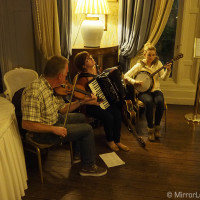
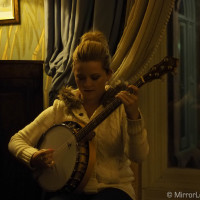
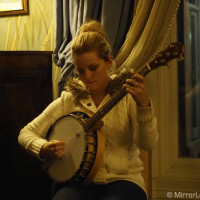

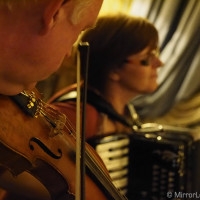
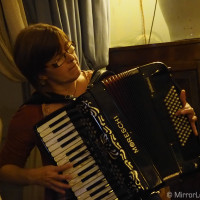


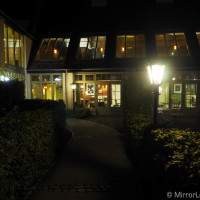
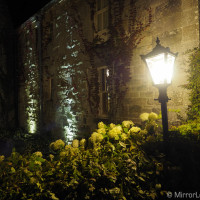
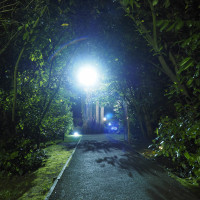
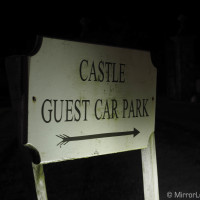
The 17mm 1.8 could also be a good choice for night street photography. An extra stop of light could be of help even if the E-M1 ISO performance are excellent. But if you are not sure about using a prime lens, then the 12-40mm is the best choice.
Thanks for sharing such a thorough review of the low light performance of the E-M1 at ISO 3200 and f 2.8. Between this review and your other one at http://goo.gl/nGzByf I am convincing myself that I should be able to purchase and use the OLY 12-40mm 2.8 for night time street photography. That I wouldn’t be limited to buying a prime lens with an f-stop of 1.8. I have been trying to make it work with my 75-300mm f/4.8-6.7 II and 9-18mm F4-5.6 Olys, but the results have been fairly disappointing so far. It probably didn’t help that I had the ISO limit set to 1600. Rather than 6400. I’ve also read of an undocumented setting http://goo.gl/A4qmHX that can help. In the flash settings menu, set the Flash Slow Limit to a shutter speed of your choice. I will be shooting people so I will try 1/80 up to 1/160 to see what it optimal.
Mathieu,
Being that the EM-1 is nearing a year old are you by any chance hearing any stirrings from Olympus on an upgrade? I would love to see a two card body from one of these mirror less body manufactures and I think a lot of other pros would too. Being a wedding photographer I’m still a little reluctant to completely ditch my two card Nikon bodies.
The NR works fine for long exposure shots. You can find some example in my mirrorless on the job review of the E-M1 😉
https://www.mirrorlessons.com/2013/12/05/mirrorless-on-the-job-one-week-with-the-olympus-om-d-e-m1/
Hi Mathieu,
thanks for for your responses to my previous posts. I have made up my mind (90%) to ditch the Fuji X100s even though it will result in an overall loss of picture quality, and especially low light performance. The X-Trans sensor is a CMOS-killer, the same old sensor in the Olys is simply not as good. BUT the AF performance and build quality/weather sealing, not to mention the awesome lens options are the kicker for me. Looking back, the X100s probably had north of 70% fail rate when it came to AF.
I do have one remaining question. You say that for long exposures the in-camera NR must be switched to ‘on’ (I believe ‘AUTO’ is recommended for really long exposures). Is the auto NR good enough to kill all the hideous noise that I see in Flickr discussion examples about this issue, and does it kill the noise without smudging out all the detail? In other words, did Olympus get the NR algorithm right, given that the end-user has no control over the parameters of the NR, as one would have in post. Could you please post some examples of 10-30sec exposures at base ISO, or at least direct me to a link where I can see the character of this auto NR setting?
Thanks again, Fred
Thanks for clearing the long exposure concern that I had.
Hi Tom, the E-M5 is better for long exposure shots taken with the noise reduction (dark frame) set to off. If you leave the NR to on (recommended, unless you don’t want to use it for a specific reason) then both cameras perform in the same way.
As for low light condition in general, the E-M1 is better. The 5-axis stabilization is improved and high ISO values have a better color rendering.
So really the only flaw about the E-M1 is long exposures without NR. If you prefer not to use the in camera noise reduction, then I can understand why you stop considering this camera (I understand that it can be a problem for star trails in astrophotography). Otherwise, the E-M1 is better in any way 😉
Great article, I was ready to move from my Nikon DSLR to the Olympus until I started to read about the long exposure and noise issues this camera has. Based on reports, the EM5 out performs the EM1 in long exposure and low light conditions. Since I do some low light and long exposure images, this put a stop on purchasing this camera. For daylight shooter, I’m sure it’s a gem. I hope the next version of this camera corrects this issue, I just can’t seem to purchase this new model, where the previous EM5 has better image quality. The investment in the camera and glass makes me put the brakes on. Maybe the next product will offer a better all-around performance.
Hi zyberk. We just published an article about the autofocus performance. You can read it here:
https://www.mirrorlessons.com/2013/09/22/hands-on-with-the-olympus-om-d-e-m1-autofocus-with-four-thirds-lumix-lenses/
The 300mm is… Huge! It is a very specific lens and very expensive. It is already on the market as it was originally designed for four thirds DSLRs.
Hello Phillipe,
Thanks for review. Since you were lucky to try the new gear : -) could you share your impressions regarding the AF tracking of the native lenses and four third lenses via MMF-3 adapter (if you had a chance to use them).
Also how big and heavy is the 300/2.8 and when is it going to be available? Is there a price?
The lack of long, high quality telephoto (similar to the 45/1.8 and 75/1.8) for this format forces me to use my full size sensor cameras.
Hi Scott, most of the photos have been converted from RAW using the Olympus Viewer Software, as the update for Lightroom and Photoshop came a few days later. Of course, you have benefits working with the RAW files, mostly concerning sharpness.
The word “completely” might be a little bit of an exaggeration, I’ll give you that 😉
But I consider some of the pictures I took at 2s (in the gallery) to be sharp even when looking at them at their full size. Now of course I wouldn’t dare say this is the sharpest result you can achieve with the camera, because the only way to achieve that in a situation like this is with a tripod and a slower aperture. Forgive my enthusiasm, but I have never achieved a level of sharpness like this (hand held with a speed of two seconds) before. Of course I haven’t tried every camera on the market either. 🙂
So, the E-M1 pic at 2s is completely sharp? Sorry, but for me isn’t, for me a sharp pic is sharp when it’s totally sharp in full size. Maybe try again with 1/15 s to have really sharp pictures?
I enjoyed this.
Raw converters are now available for this camera. It would be interesting to see a Raw comparison, as some of the benefits you describe might be due to an improved Jpeg engine.
Regards,
S.
Bonjour Philippe. L’exemple à 800 ISO n’a pas la même zone de mise au point en effet, je m’en suis aperçu trop tard mais j’ai voulu quand même garder les deux images comme exemple conernant le bruit.
J’ai un meilleur exemple concernant le piqué avec les deux images à 3200 ISO (bûches pour la cheminé). Je me rends compte que ces images ne sont pas toutes parfaites, malheureusement je n’ai pas eu vraiment le temps pour faire un test plus approfondi. Si tout va bien, j’aurais un exemplaire à tester dans les semaines à venir avec plus de temps à ma disposition.
Concernant le bruit, comme je l’ai dit dans l’article la vraie différence est perceptible à 12800 et 25600 ISO. Pour les autres valeurs, le bruit est pratiquement identique.
Bonjour,
J’apprécie beaucoup les questions que vous posez et l’esprit de votre site. Mais il me semble que vos mises au point ne sont pas tout à fait identiques dans la comparaison des cadres (rectangulaire et ovale) à 800 ISO. Difficile dans ces conditions d’affirmer que le “piqué” est supérieur avec le M1. Même chose avec la comparaison des cheminées. Lorsqu’on regarde en bas à gauche le petit portrait en buste, le piqué de l’image 10.jpg est supérieur à celui de l’image 9.jpg. La mise au point est-elle la même ? Et sur ces deux images, le niveau de bruit est très proche sur ces deux images. Cela dit pour tempérer un peu l’enthousiasme de votre démonstration…
Philippe
An insightful article. Looking forward to your next postings.